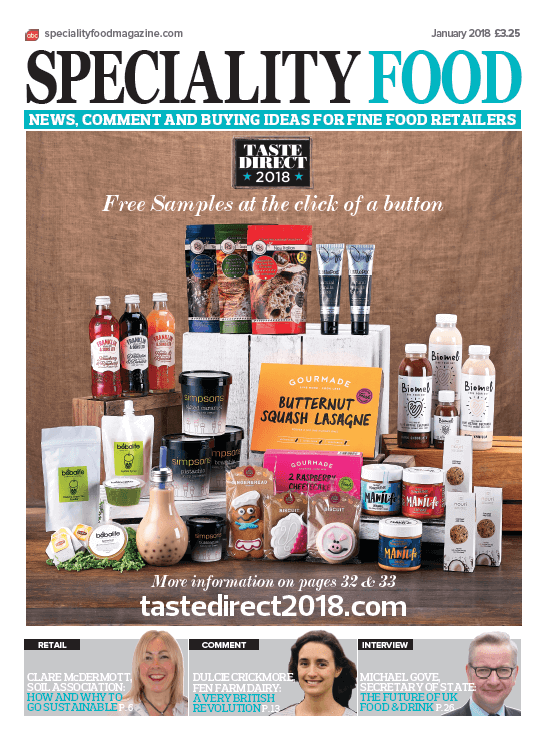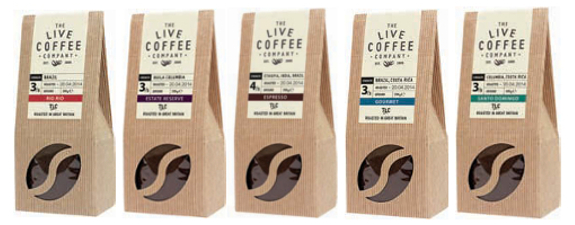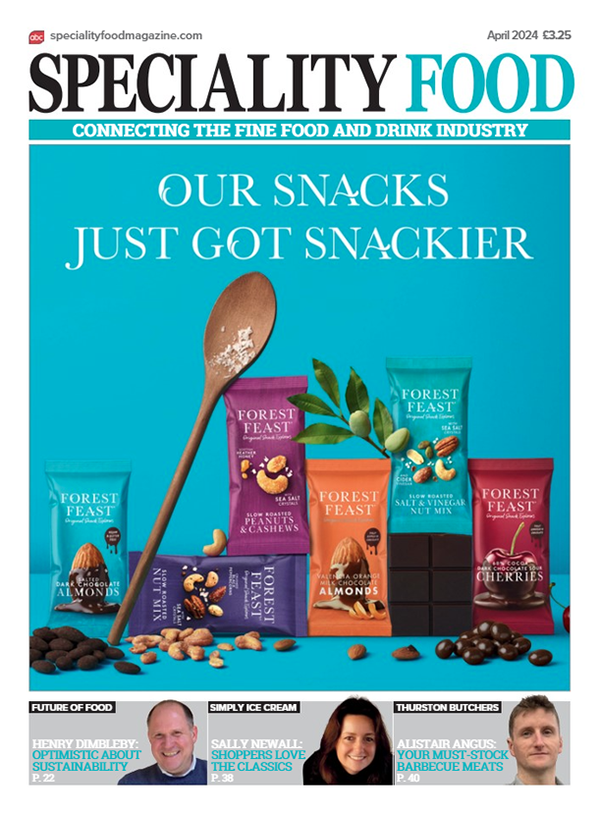
subscribe today
Subscribe to Speciality Food magazine today for just £19.99/year.
subscribe now
For Daniel Brooks, the road to the launch of his Live Coffee brand at the 2014 Speciality and Fine Food Show began in Italy in 1979, where he first discovered cappuccino and espresso coffee Good Italian coffee was not widely available at this time. Moving to New York shortly afterwards, Live Coffee’s international business director remembers having “to go up to North Bronx to get a cappuccino.” Fortunately for the world of coffee, the nineties saw something of a revolution in coffee, when the drink in all its various types and servings was promoted to the world via a certain Seattle coffee shop chain. Although hailing from Seattle himself, Daniel was more closely involved at this time in the coffee scene in Europe.
Daniel’s attachment to coffee is a deep one. For me, he says, “coffee is a little like wine and cigars and good whisky, because it comes from very interesting and often romantic regions across the world. There are numerous ways to combine it and roast it, so if you are creative with food, coffee is a wonderful thing.” Daniel had been trading in coffee since 2006, buying their product in Central America and helping other companies launch their brands.
The coffee that Daniel has created is a range which exploits the natural benefits of the beverage, qualities which can be lost through over-roasting. “Coffee is a natural product,” Daniel says, “it’s a berry and if you roast a berry, treat it properly and don’t overcook it, it tends to retain the natural benefits of coffee: it’s high in anti-oxidants, minerals and vitamins and increasingly, people are becoming aware of this. It’s like wine: people now know that wine contains tannin and in reasonable amounts, it offers benefits.”
Daniel also wanted to create “very drinkable coffee” with wide appeal. Live Coffee would have “lot of flavour”. It would be “strong, but not over-roasted,” and “not made for coffee aficionados, because a lot of time, the coffee aficionados like a very strong and pungent and highly developed blend, whereas we want something that the consumer can drink every day.” Live Coffee has been designed and blended to appeal as much to tea drinkers or moderate coffee drinkers as to people who simply love coffee. “We have found ourselves a taste niche that we think that we think will appeal to people,” Daniel says.

A lot of consideration and experience went into developing the right blends for the range. “Blending is the fun part of the job,” Daniel says. Having worked with blends for 20 years, Daniel knows the sort of profile he is looking for before he sits down with his roasting master. At the blending stage, he says, “first you roast the coffee in small batches and cup it. Then you keep cupping it until you reach a consensus with your cupping master, your roasting master and the people you work with on the buying. After this, you roast a few batches to make sure it’s consistent; it’s one thing to roast in small batches and another to roast in large batches.” Hitting the right blend can take months, Daniel says, “but sometimes you can pick up a blend and it’s perfect within a week. With Santo Domingo, we hit it. What I wanted was something like a Swiss roast, which has got a bit of a special flavour but it’s not over-roasted, and it tends to be a little bit sweet as well.”
The Live Coffee range is sourced “from some of the best and most interesting regions of the world,” Daniel says. “My personal favourite coffee is from Ethiopia. It’s chocolatey and a little sweet, but we think that coffee from Ethiopia benefits from being blended with other coffees. And so, for example, we have a Columbian and a Costa Rican blend which we are very proud of called Santo Domingo. This 100% arabica blend has been a big winner as a really nice everyday drink. Then we have a coffee from three plantations in |Columbia: it’s not an overpowering Columbian but it’s a good Columbian. This is quite strong and very rich, being a little bit darker-roasted than the Santo Domingo. We have a gourmet coffee from Brazil and Costa Rica which also contains some Kenyan coffee of a very high quality. Now we have an espresso with the necessary acidity to add body to the coffee. This blend needs to be strong to cut through the milk so that when you drink your latte and your cappuccino, you get that strong coffee flavour behind it. We put in some Ethiopian but also some Brazilian arabica. Rio Rio is a Brazilian blend.
Care has gone into the packaging of this new coffee range. “We started out with the idea that we wanted people to see the coffee,” Daniel says. “In the coffee business, everybody is trying to solve this issue. If you make the whole pack plastic or transparent, you see too much of it, so we cut a hole in it and made it look like a bean. We also wanted it to look natural and also different. The products are designed to stand out and also to feel good in your hand.”





